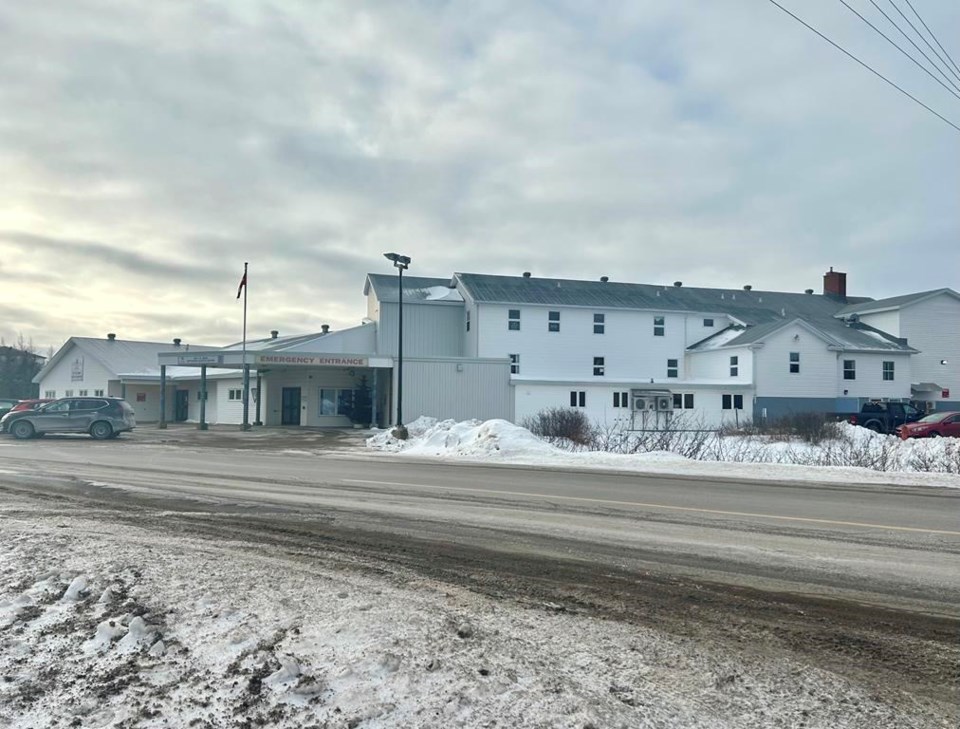ST. JOHN'S, N.L. — The 12-bed hospital in New-Wes-Valley, N.L. — population 2,000 — found itself at the centre of a heated debate about staff shortages in rural health care when the province signed a contract to staff its emergency department virtually.
Mayor Mike Tiller, a paramedic, is not completely sold on the idea of having doctors hundreds of kilometres away responsible for urgent care of his town's residents, but a recent experience has convinced him the virtual ER can save lives.
Tiller says a patient who came to the Dr. Y.K. Jeon Kittiwake Health Centre in cardiac distress was able to get a life-saving injection thanks to a virtual emergency doctor, who teamed with on-site health professionals such as nurses or paramedics to provide treatment. The injection broke up blood clots and kept the patient alive so he could be transferred to a larger hospital in Gander, about an hour and a half away, and then airlifted to St. John's, Tiller said in a recent interview.
Without the virtual emergency room, the hospital would have been closed, Tiller said.
"It will save lives," Tiller said about the town's virtual emergency room. "It's not ideal. It's not what we hope is a permanent solution … but it's saving lives, which is what it's there for."
Like many rural hospitals across Canada, the New-Wes-Valley health centre has been plagued by closures because there were no doctors or nurses to keep it open. It currently has one doctor on staff who does not cover the emergency room, Tiller said. Normally, the facility would have six doctors, all sharing emergency duties.
Tiller said the hospital was closed so much at the beginning of last year, he was worried it would be shut down for good.
In an effort to keep these centres open, the Newfoundland and Labrador government has offered more money to doctors working in rural hospitals, flown in temporary doctors, and introduced virtual services where patients in smaller, unstaffed hospitals could speak to physicians in larger facilities.
In November, the province signed a two-year, $22-million contract with Teladoc Health, which is headquartered in New York state, to build a more robust "virtual care solution" for rural emergency rooms and for patients who need primary care but don't have a family doctor.
The move signalled that virtual care would play a more prominent role in the government's efforts to keep rural hospitals open. The contract, obtained by The Canadian Press, says Teladoc would offer its services in up to five rural emergency rooms beginning in November, and up to 20 rural emergency departments beginning in March. It began operating in the New-Wes-Valley hospital in late November.
In its proposal to Newfoundland and Labrador health officials, the company says it has a pool of 350 physicians licensed to practise in Canada. Doctors working virtual emergency rooms will reside outside the province but be licensed to work there, the company said. They will keep rural emergency departments open seven days a week, 24 hours a day.
"Teladoc Health’s vision is to make virtual care the first step on any health-care journey," the document said.
The company has since expanded its virtual emergency services into two more rural hospitals, said a statement Thursday from Newfoundland and Labrador Health Services. As of Dec. 31, 172 patients had sought urgent or emergency care across the three facilities, and ten were transferred to larger hospitals.
Staff shortages are driving a record number of rural emergency room closures across Canada, and more provinces are turning to virtual care to keep them open, said Dr. Trevor Jain, an emergency physician in Prince Edward Island and a spokesperson for the Canadian Association of Emergency Physicians. The approach is not without its risks, he said.
"I've heard this argument before, that some care is better than no care. But some care can cause harm if not done properly," Jain said in an interview. Virtual care is "extremely expensive," he added, and officials often turn to it as a "quick fix" without addressing the larger problems.
Ultimately, virtual care would work best in a hybrid situation, alongside on-site emergency physicians in well-staffed hospitals, Jain said. He added that provinces must keep working to train and recruit physicians and nurses who will work in rural emergency rooms and to shore up health-care systems outside of emergency rooms.
Dr. Jan Sommers agrees. In an ideal system, she said, virtual care would be primarily used to help during surge times in emergency departments that are already well staffed. Sommers is the head of emergency at Nova Scotia's Colchester East Hants Health Centre, which piloted the VirtualEmergencyNS system. Like the Teladoc system, it uses virtual physicians with on-site health professionals who act as the doctor's hands.
However, the physicians with VirtualEmergencyNS either work in Nova Scotia or have experience there, she said.
Virtual care as it's used today in Canada is relatively new — it emerged during the COVID-19 pandemic — and there are still questions about its use, Sommers said.
"Virtual care will never replace face-to-face care, and nor should it," she said. "But I do think that it definitely is going to be a piece of the solution for health care going forward."
In New-Wes-Valley, Tiller said he's grateful the hospital is open and saving lives, but virtual care still has its drawbacks. For example, patients who arrive at the town's virtual emergency room and need extended care still have to be transferred to Gander, and patients using virtual care for regular checkups see a different doctor for each visit.
"We want to have our doctors here," he said.
This report by The Canadian Press was first published Jan. 11, 2024.
Sarah Smellie, The Canadian Press



